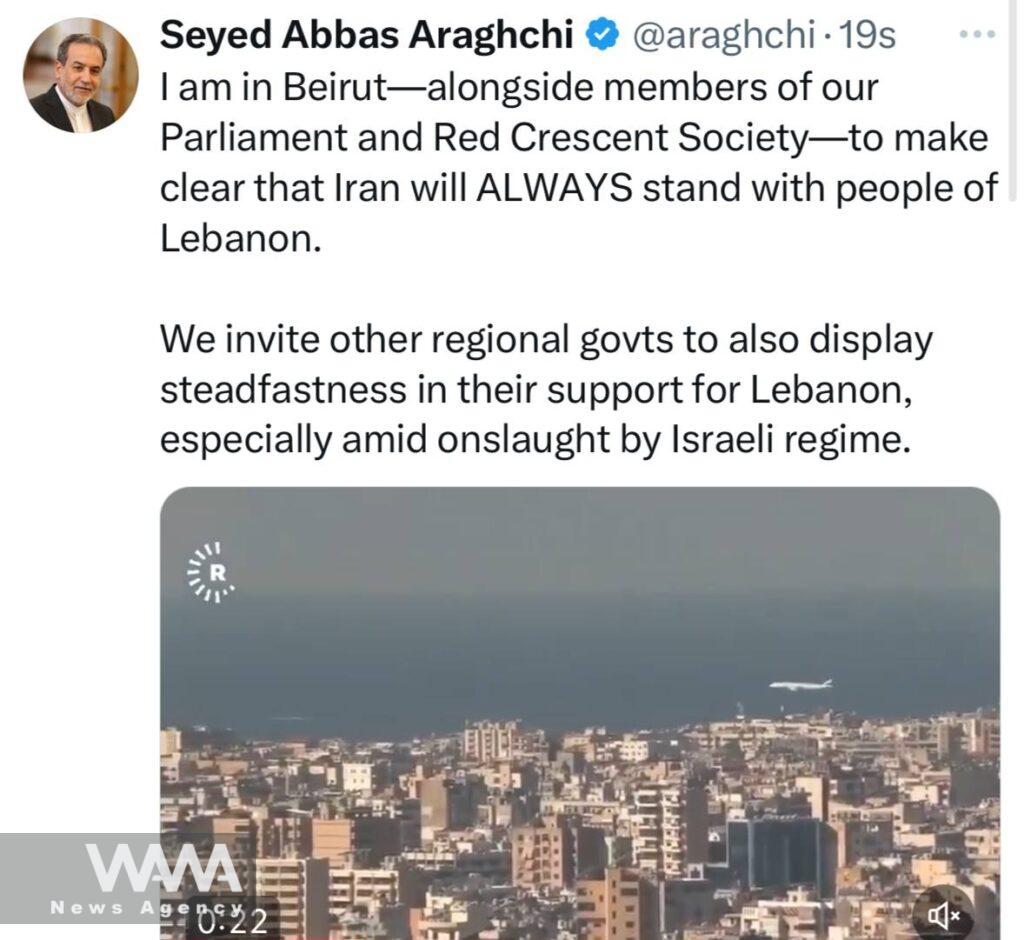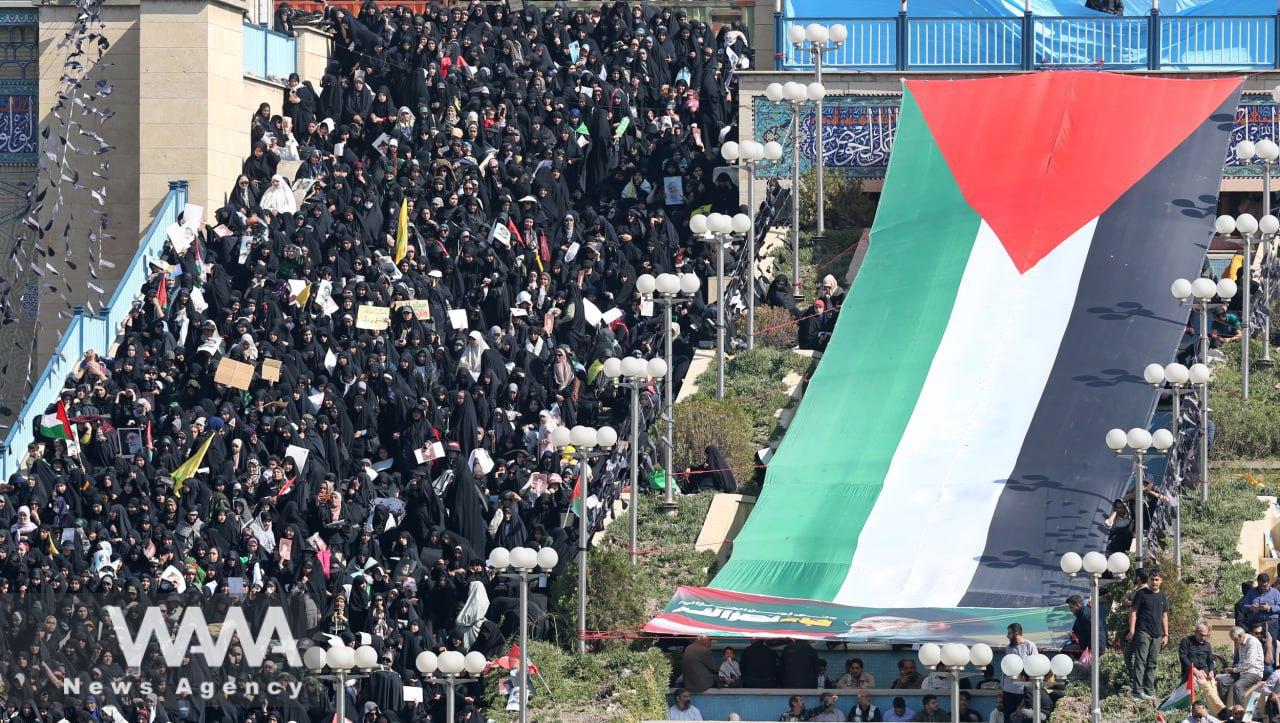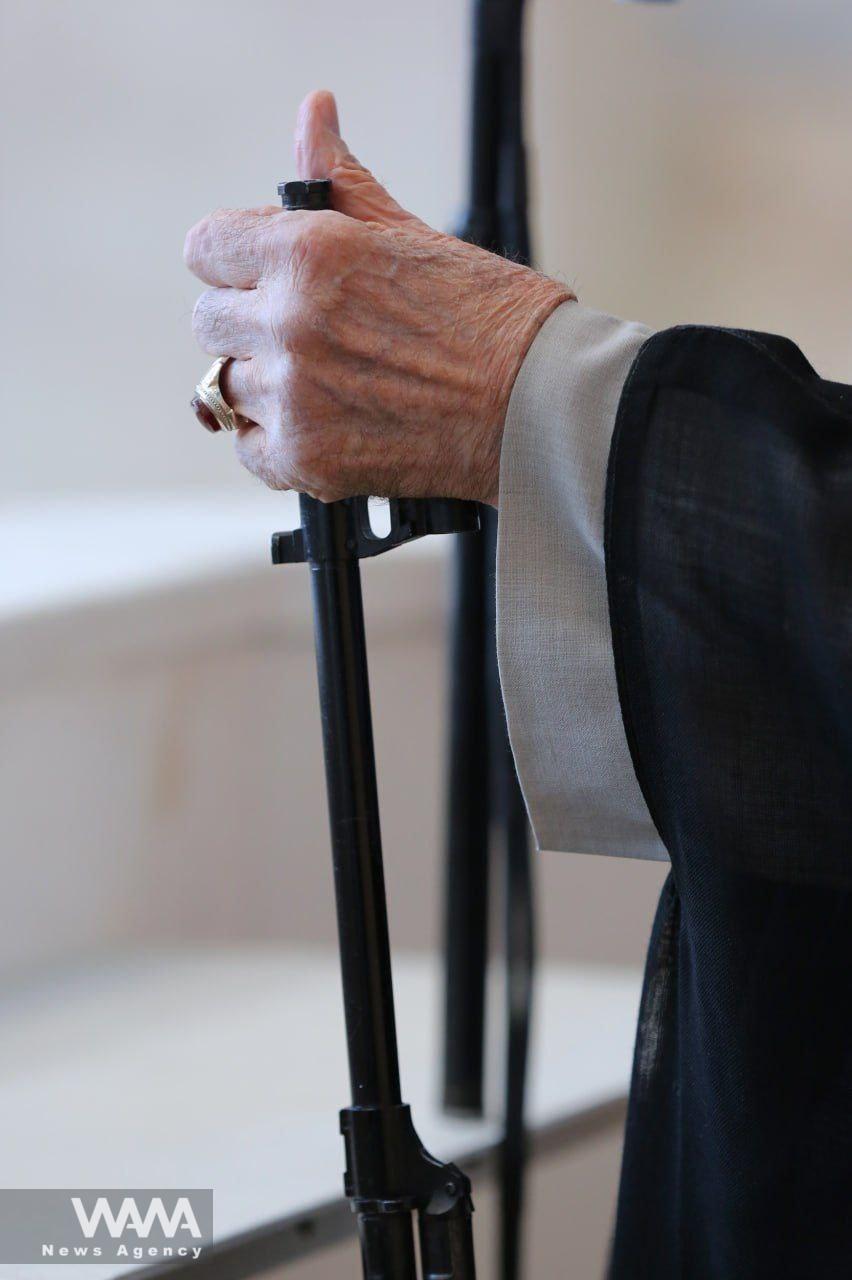Diplomatic Flight Amid Threats
WANA (Oct 04) – The visit of Abbas Araghchi, Iran’s Deputy Foreign Minister, to Lebanon during one of the most sensitive regional periods tells a story where diplomacy and political maneuvering are intertwined with military power.
As Araghchi, accompanied by his delegation and a plane carrying humanitarian aid, headed to Beirut, threats from the Zionist regime to shoot down any flights to this airport seemed like a serious warning. However, these threats couldn’t stop the implementation of the Iranian President’s order, which aimed to break the political and aid blockade on Beirut.

This trip wasn’t merely about delivering food and medicine; it was a symbol of Iran’s power in simultaneously using both diplomacy and the battlefield to alter regional dynamics. When the Iranian plane landed in Beirut, it sent a message to the world that Tehran is prepared to leverage its influence to support its allies under any circumstances. Even if the Zionist regime deployed its aircraft to patrol Beirut’s skies, Iran would forge its path through both diplomacy and military might.
The Zionist regime, which had been trying to amplify its tactical victories with military displays and repeated threats on the anniversary of the Gaza war, was faced with this trip, which directly questioned its strategic successes.
On one hand, Hamas’ martyrdom operations and, on the other, Iran’s missile attacks in “Operation Promise of Truth 2,” along with Hezbollah’s bold strikes, shifted the balance of power in favor of the resistance axis. Now, Araghchi’s presence in Beirut demonstrates that Iran has much to offer not only militarily but also diplomatically.

Meanwhile, Netanyahu sought to conceal his deeper failures through warlike actions in Lebanon and displays of power in Gaza. However, Araghchi’s presence at this critical time served as a response to all these efforts. Essentially, with this move, Iran showed the Zionist regime and its allies that not only is the Beirut blockade breakable, but no threat can stop Iran’s influence and impact in the region.
At the same time as these developments, with Israel’s threats against Iran and its allies at their peak, the Supreme Leader of Iran, Ayatollah Khamenei, delivered a brave and impactful sermon during Friday prayers in Tehran that resonated widely.
In his address to the people of Palestine and Lebanon, he emphasized that the Zionist enemy would never be able to damage the solid structures of resistance, including Hezbollah and Hamas. He also urged the people of the region to strengthen their unity and solidarity and maintain stronger faith in the face of such aggressions.

This historic speech not only reiterated Iran’s full support for the resistance axis but also served as a direct response to Zionist threats.
This move by Iran’s leader was a defiant answer to Netanyahu’s threats at the United Nations, where he claimed that no part of Iran was beyond Israel’s reach. Despite such threats, the Iranian leader, in a pre-announced and publicized location, stood with power and addressed the people!
The leader’s presence, at such a sensitive time, in the midst of the people and leading the communal prayer, was seen as a bold and unparalleled act, demonstrating Iran’s steadfast determination in the face of Zionist threats. Many analysts regarded this action as a symbolic blow to Israel’s terror policies.

In his sermon, while holding a sniper rifle, the Supreme Leader referred to Iran’s missile attack on Israel and emphasized, “We neither hesitate in fulfilling our duties, nor act hastily. Based on the decisions made by our military and political leaders, if necessary, further actions will be taken.”
This coordination between Iran’s active diplomacy during Araghchi’s visit and the leader’s clear message showcased a comprehensive strategy. It demonstrated that Iran is not limited to either military action or diplomacy alone but seeks to create fundamental changes in regional dynamics by leveraging both arenas.













